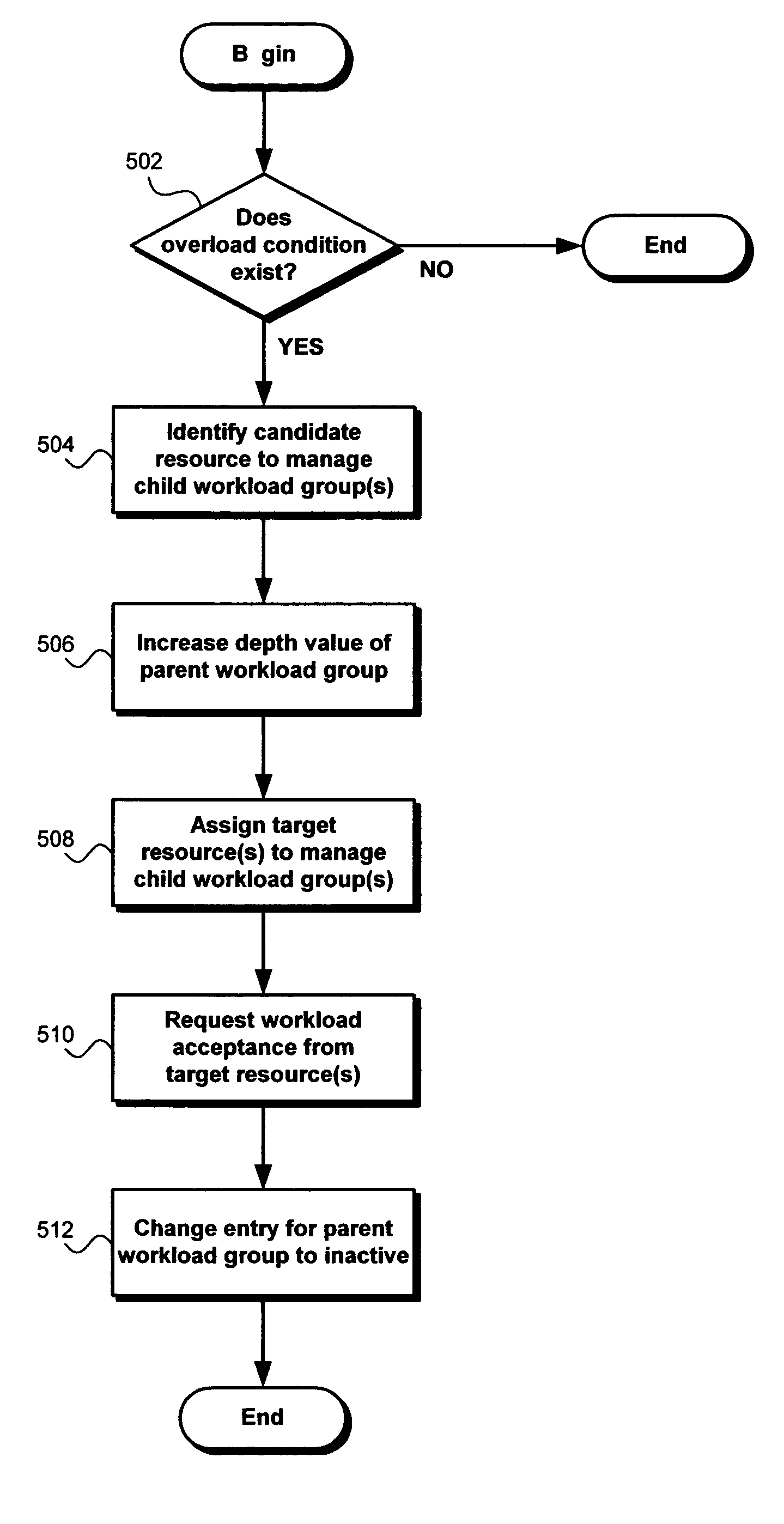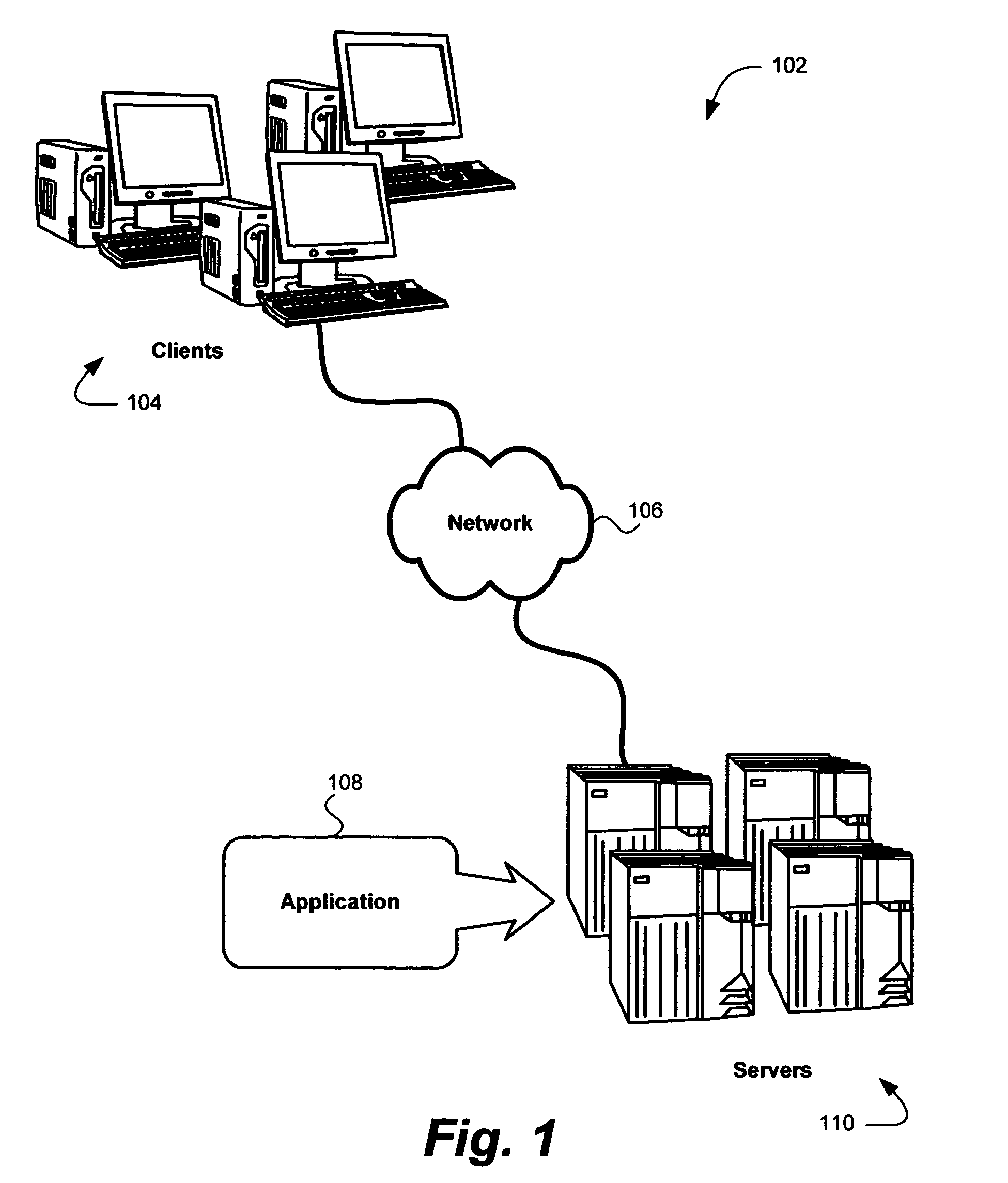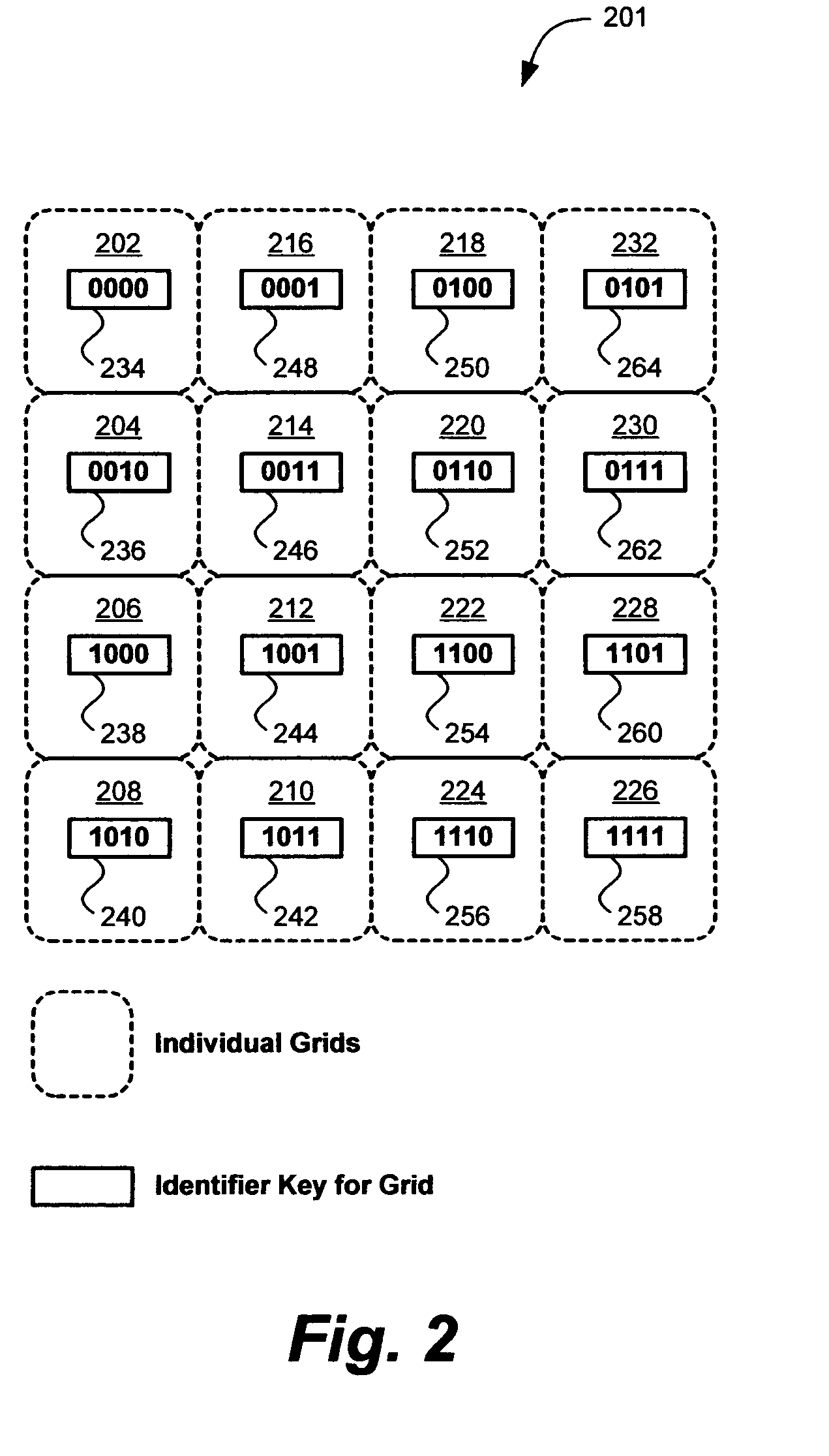Adaptive load distribution in managing dynamic and transient data for distributed applications
- Summary
- Abstract
- Description
- Claims
- Application Information
AI Technical Summary
Benefits of technology
Problems solved by technology
Method used
Image
Examples
Embodiment Construction
[0032] The following description details how the present invention is employed to adaptively allocate workload among a plurality of resources. Throughout the description of the invention reference is made to FIGS. 1-9. When referring to the figures, like structures and elements shown throughout are indicated with like reference numerals.
[0033]FIG. 1 shows an exemplary environment 102 embodying the present invention. It is initially noted that the environment 102 is presented for illustration purposes only, and is representative of countless configurations in which the invention may be implemented. Thus, the present invention should not be construed as limited to the environment configurations shown and discussed herein.
[0034] The environment 102 includes clients 104 coupled to a network 106. The network 106 may be any network known in the art for effectuation communications between the various devices in the environment 102. Thus, the network 106 can be a local area network (LAN),...
PUM
 Login to View More
Login to View More Abstract
Description
Claims
Application Information
 Login to View More
Login to View More - R&D
- Intellectual Property
- Life Sciences
- Materials
- Tech Scout
- Unparalleled Data Quality
- Higher Quality Content
- 60% Fewer Hallucinations
Browse by: Latest US Patents, China's latest patents, Technical Efficacy Thesaurus, Application Domain, Technology Topic, Popular Technical Reports.
© 2025 PatSnap. All rights reserved.Legal|Privacy policy|Modern Slavery Act Transparency Statement|Sitemap|About US| Contact US: help@patsnap.com



